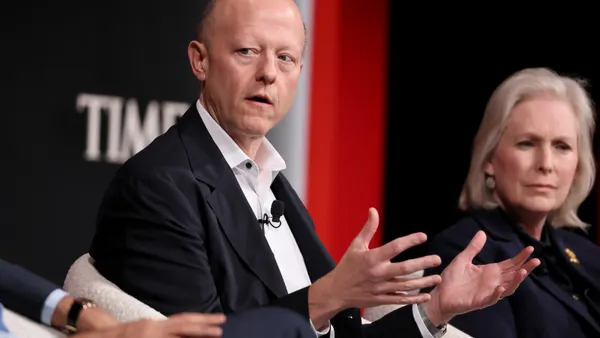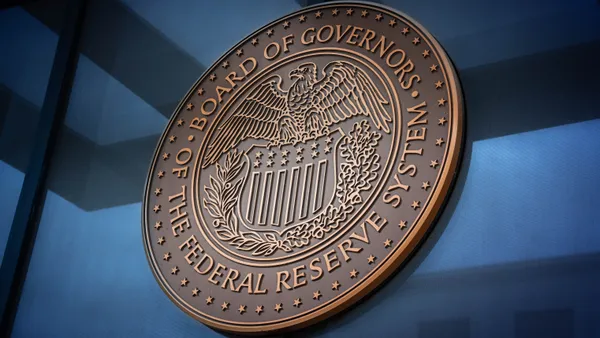Sen. Mark Warner, D-VA, said he plans to introduce legislation that would require banks, on an episodic basis, to use the Federal Reserve's discount window, a measure he said would help remove the stigma associated with tapping the central bank’s safety net.
“I’m going to put legislation forward that will require some mandatory usage [of the discount window],” Warner said during last week’s Senate Banking Committee hearing, where lawmakers questioned CEOs of eight of the nation’s largest banks on the health of their industry.
Bank capital requirements, and the CEOs’ opposition to a proposal that would require the U.S.’s eight global systemically important banks to hold roughly 19% more capital on their balance sheets to shield against stress, took up a significant portion of Wednesday’s hearing.
While Warner shared their concern that new requirements could have unintended negative consequences on the economy, he expressed frustration that banks aren’t doing enough to use the Fed’s discount window, which is aimed at helping firms in a liquidity crunch.
"We can't complain about new regulations if you aren't using existing tools,” he said.
The Federal Reserve’s short-term lending facility is aimed at providing liquidity for banks in times of crisis.
A Fed survey of senior bank financial officers released in August, however, found that public perception and the potential for negative treatment by bank supervisors discourages some firms from using the facility.
In addition to the stigma associated with using the discount window, not enough banks know how to use the tool in an emergency, Warner said.
“In terms of [Silicon Valley Bank] and Signature, they didn’t even have procedures in place to know how to utilize that tool,” said Warner, referencing two regional banks that collapsed in March after experiencing bank runs.
Small banks, and even some large institutions, do not conduct frequent tests of the discount window, according to an August analysis of Fed data by Reuters.
“Why shouldn't we have, maybe on some kind of random basis, a mandatory use of the discount window, so that we can start erasing that stigma to make sure that every bank, large or small, knows how to use it?” Warner said, in a question directed at Bank of America CEO Brian Moynihan. “Because at least in terms of liquidity, this would be the most powerful tool.”
Moynihan acknowledged the banking industry’s reluctance to use the discount window during Wednesday’s hearing.
“One of the core roles and the reason why the Federal Reserve exists is to provide liquidity at a time of stress as the lender of last resort. And every time we're 100% reluctant to use it as an industry, because it looks like we're weak,” he said.
“We know there's a stigma problem, but we don't have a plan to address it,” Warner said.
Bank regulators, including the Fed, Federal Deposit Insurance Corp., Office of the Comptroller of the Currency and National Credit Union Administration, released guidance in July, encouraging banks “to incorporate the discount window as part of their contingency funding arrangements," adding lenders should maintain "operational readiness" to use the tool when needed.
During a July press conference, Fed Chair Jerome Powell acknowledged that the spring’s banking turmoil has shown that using the discount window "can be a little bit clunky."
"Why not be in a situation where you're just much more ready in case you … need to access this discount window?" he said, according to Reuters.














